Microbiological Quality Control Strains: Which Culture Collection Should You Use?
The most renowned collection in the world is probably the ATCC (American Type Culture Collection). However, there are many other culture collections type that might be more accessible and affordable.
So, can we use strains from other collections? And what are the differences between these collections?
This is what we will explore in this article.
Best QC strains
Pharma : The best QC Strain suppliers
We polled the SuperMicrobiologists.
Here are their favorite QC Strains
What Do Standards and Pharmacopeias Say?
Each country (or almost each one) has its own national strain library, making it challenging for an international standard to mention strains from just one library. Naming them all would be even harder!
Therefore, standards allow the use of strains from other collections, as seen in chapter <61> of the United States Pharmacopeia:
Staphylococcus aureus such as ATCC 6538, NCIMB 9518, CIP 4.83, or NBRC 13276
From chapter <61> of the US Pharmacopoeia
Four collections are mentioned (ATCC, NCIMB, CIP and NBRC), but the phrase “such as” opens the door to the use of other “equivalent” strains.
Since 2010, the WDCM (World Data Center for Microorganisms) number is also included. The WDCM database helps trace equivalences between the different national collections… which is very handy for microbiologists.
This makes it easier to find a supplier and ensures you are using the correct strain.
We looked up the strain mentioned earlier (ATCC 6538) in the WDCM database, and here’s the result:

It has equivalents in 8 other collections – quite a few options!
How Can Two Strains Be Equivalent?
We planned to end the article here, but our curiosity got the better of us. Are these strains from independent samples, or do they originate from the same exact strain?
The likely answer is the latter. For a new species strain to be registered in a biobank, it must be deposited in two different collections in two different countries. It’s not uncommon for strain libraries to exchange strains…like kids exchange their Panini stickers !
This explains how one strain can be found in different countries, in different collections, under different strain numbers.
For example, the Staphylococcus aureus subsp. aureus is now present in over 30 different collections!

If you want to track strain exchanges between libraries, we recommend the StrainInfo website – but be careful, it’s quite addictive (we spent several hours there)!
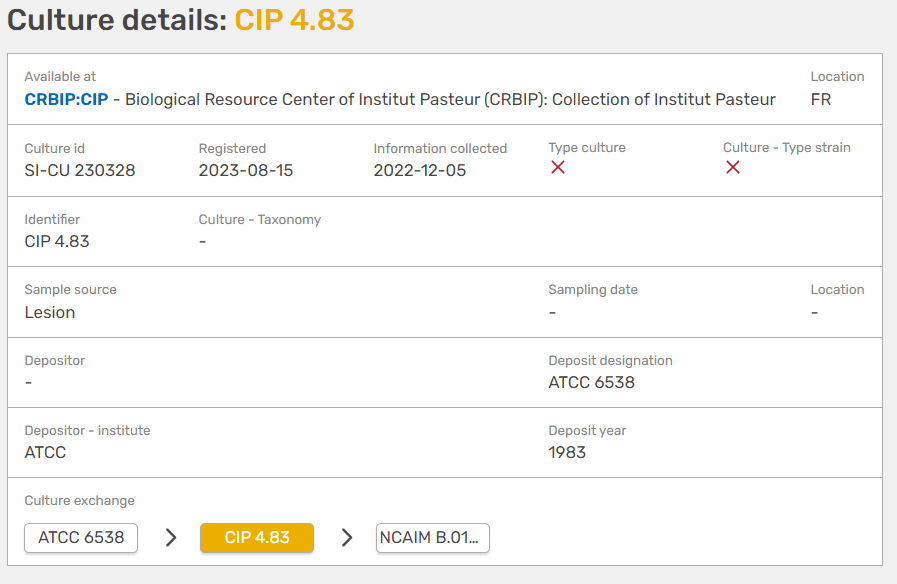
We found our Staphylococcus aureus ATCC 6538 strain, which was exchanged with the Institut Pasteur Collection (CIP 4.83). Pasteur then exchanged it with the Hungarian NCAIM collection.
Are Equivalent Strains Truly Identical?
As a microbiologist, you know that bacteria, yeasts, and molds mutate quickly. It’s likely that strains shared decades ago, and repeatedly cultured, are now genetically (slightly) different
Do these mutations have an impact?
For method validations or culture media growth promotion tests, these mutations are unlikely to matter. However, for more precise tests, like molecular biology, these mutations might have an impact, so be cautious!
Here’s a concrete example of a study on a strain shared by multiple collections that mutated (thanks to the Institut Pasteur team for sharing this).
The strain in question is possibly the most well-known in the world (tied with Saccharomyces cerevisiae). It’s the strain discovered by Escherich in 1885 and named after him.
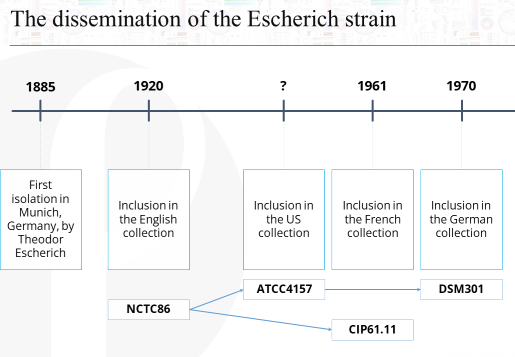
This strain was introduced into the English collection (NCTC 86) in 1920, then shared with the American collection (ATCC 4157), which shared it with the German collection in 1970 (DSM 301).
Meanwhile, the strain in England was also shared with the Pasteur collection in France in 1961 (CIP 61.11).
In 2018, researchers published a study comparing the 4 strains from these different collections.
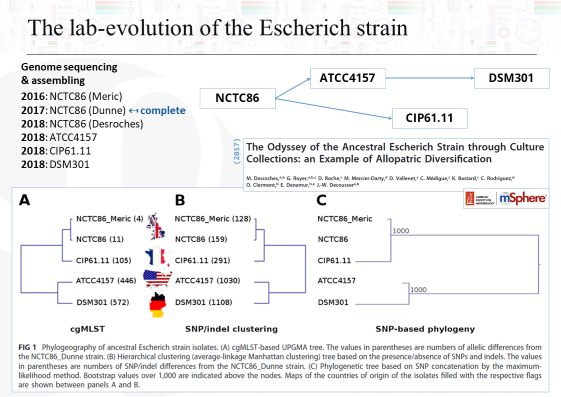
The results show there are indeed genetic differences between the strains!
Best QC strains
Food & Water : The best QC Strain suppliers
We polled the SuperMicrobiologists.
Here are their favorite QC Strains
Conclusion
To the question, “Which strain collection should you use?” we recommend using the strain that is most convenient for you (cost, ease of use, availability), as long as it is equivalent to the strain mentioned in your standards or regulations.
For this, we recommend using the WDCM site: WDCM
Names and Characteristics of Major Strain Collections:
- ATCC (American Type Culture Collection): Located in the USA, one of the oldest and largest collections, offering a wide range of bacterial strains, fungi, yeasts, viruses, cell lines, etc.
- DSMZ (Deutsche Sammlung von Mikroorganismen und Zellkulturen): Based in Germany, known for its extensive collection of bacteria, including rare and hard-to-cultivate species.
- CCUG (Culture Collection, University of Gothenburg): Located in Sweden, rich in clinical and environmental strains.
- CIP (Collection de l’Institut Pasteur): Based in France, known for pathogenic strains and historical collections.
- NCTC (National Collection of Type Cultures): Located in the UK, focusing on reference strains for diagnostic tests and research.
- JCM (Japan Collection of Microorganisms): This Japanese collection is renowned for its diversity of microorganisms, including bacteria.
- KCTC (Korean Collection for Type Cultures): Located in South Korea, offers a wide range of bacterial strains and other microorganisms.
- MTCC (Microbial Type Culture Collection and Gene Bank): Based in India, distinguished by its resources of microorganisms from the Indian subcontinent.
- NBRC (NITE Biological Resource Center): Located in Japan, focusing on industrial microorganisms, including bacteria and fungi.
- CICC (China Center of Industrial Culture Collection): Based in China.
We would like to thank Fay Betsou and Dominique Clermont for helping us better understand the equivalence between strains.

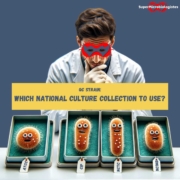

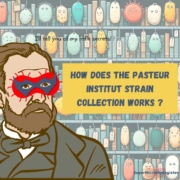













Thank you for this interesting article! ISO standards in food chain microbiology, developed by ISO TC 34 SC 9, cite reference strains to test the performance of culture media. A WDCM reference is required to avoid giving excludivity to a national collection.
Thanks Bertrand for your kind word. The use of WDCM references tremendously helps the microbiologists to find the right QC strain “quickly” and with certainty. Thanks again to the ISO TC 34 SC 9 😉